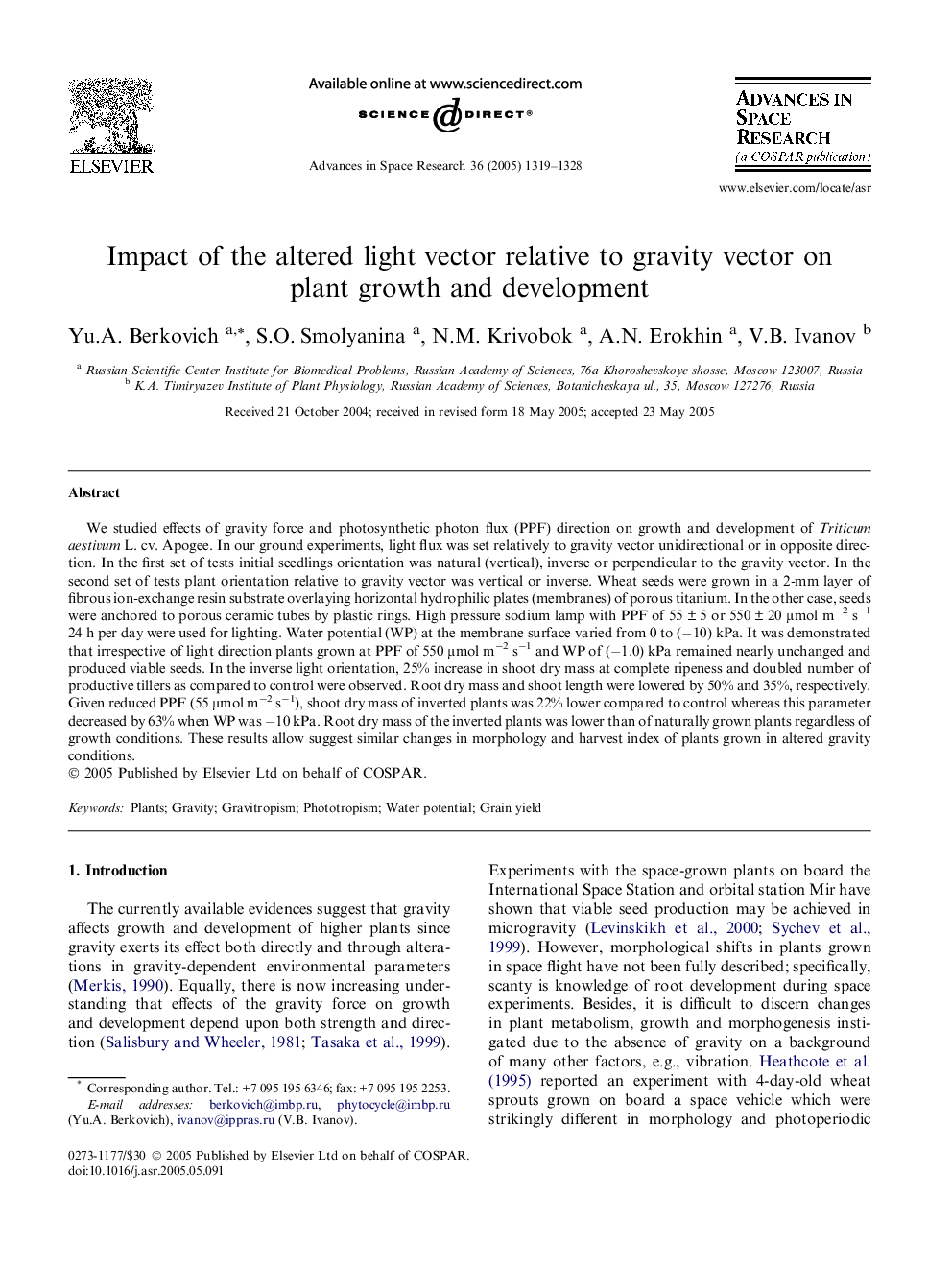| Article ID | Journal | Published Year | Pages | File Type |
|---|---|---|---|---|
| 10694704 | Advances in Space Research | 2005 | 10 Pages |
Abstract
We studied effects of gravity force and photosynthetic photon flux (PPF) direction on growth and development of Triticum aestivum L. cv. Apogee. In our ground experiments, light flux was set relatively to gravity vector unidirectional or in opposite direction. In the first set of tests initial seedlings orientation was natural (vertical), inverse or perpendicular to the gravity vector. In the second set of tests plant orientation relative to gravity vector was vertical or inverse. Wheat seeds were grown in a 2-mm layer of fibrous ion-exchange resin substrate overlaying horizontal hydrophilic plates (membranes) of porous titanium. In the other case, seeds were anchored to porous ceramic tubes by plastic rings. High pressure sodium lamp with PPF of 55 ± 5 or 550 ± 20 μmol mâ2 sâ1 24 h per day were used for lighting. Water potential (WP) at the membrane surface varied from 0 to (â10) kPa. It was demonstrated that irrespective of light direction plants grown at PPF of 550 μmol mâ2 sâ1 and WP of (â1.0) kPa remained nearly unchanged and produced viable seeds. In the inverse light orientation, 25% increase in shoot dry mass at complete ripeness and doubled number of productive tillers as compared to control were observed. Root dry mass and shoot length were lowered by 50% and 35%, respectively. Given reduced PPF (55 μmol mâ2 sâ1), shoot dry mass of inverted plants was 22% lower compared to control whereas this parameter decreased by 63% when WP was â10 kPa. Root dry mass of the inverted plants was lower than of naturally grown plants regardless of growth conditions. These results allow suggest similar changes in morphology and harvest index of plants grown in altered gravity conditions.
Related Topics
Physical Sciences and Engineering
Earth and Planetary Sciences
Space and Planetary Science
Authors
Yu.A. Berkovich, S.O. Smolyanina, N.M. Krivobok, A.N. Erokhin, V.B. Ivanov,
